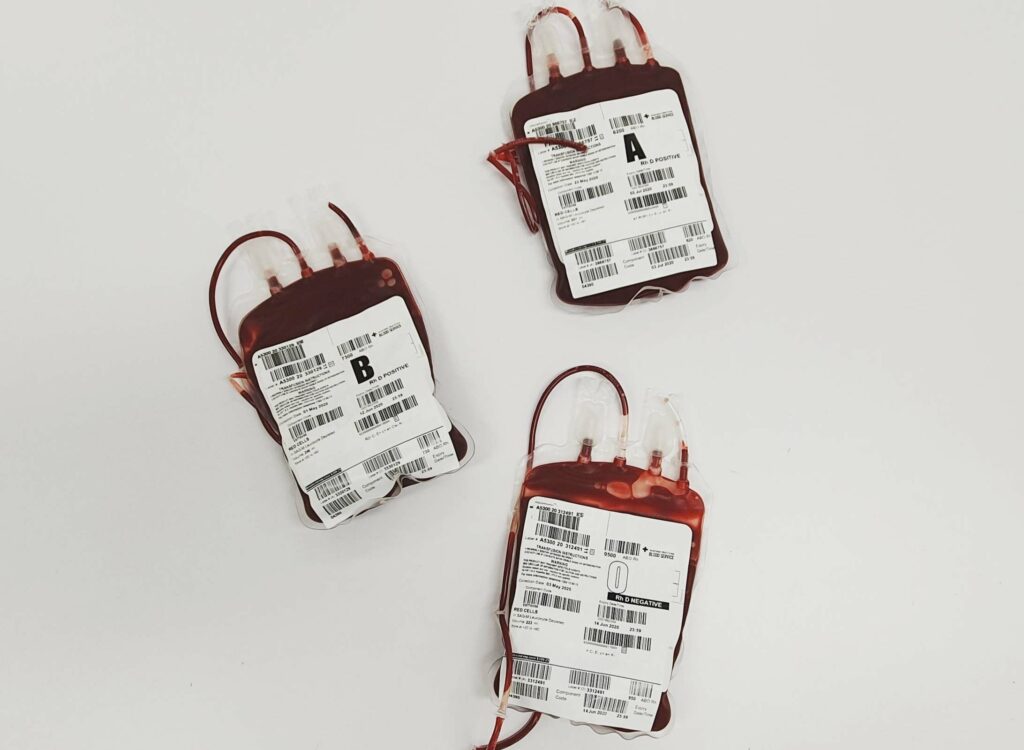Living with someone who has a borderline personality disorder (BPD) can be challenging. Now, imagine being raised by a mother who suffers from this condition. Borderline personality disorder is a serious mental health issue characterized by an ongoing pattern of varying moods, self-image, and behavior. These symptoms often result in impulsive actions and problems in relationships, including those between a mother and her child.
As someone who has spent considerable time researching and understanding the complexities of BPD, I’ve seen first-hand how it can impact family dynamics. A mother with BPD may experience intense bouts of anger, depression, or anxiety that may last only hours or at worst for days. These emotional swings can create a volatile home environment where children are ‘walking on eggshells’, never quite sure what will trigger their mother’s emotional upheaval.
Let’s delve deeper into this topic to better grasp the realities faced by children growing up with a mom battling borderline personality disorder. It’s crucial to remember there’s no one-size-fits-all scenario here – every individual with BPD presents uniquely due to different factors such as genetics, brain structure and function, cultural and social influences among others.
Understanding Borderline Personality Disorder
Borderline Personality Disorder, often abbreviated as BPD, is a complex mental health condition that’s been the subject of increasing discussion and understanding. It’s characterized by a pattern of intense mood swings, impulsivity, unstable self-image and volatile relationships. Often misunderstood, it’s important for us to delve deeper into this disorder to shed light on its characteristics and impact.
Diving headfirst into the world of BPD, one might wonder what causes this disorder. Unfortunately, like many mental health conditions, there isn’t a clear-cut answer. Experts believe it’s a mix of genetic predisposition coupled with environmental factors such as childhood trauma or neglect.
A startling statistic in relation to BPD is that around 1.6% of the US population suffers from this disorder according to the National Institute of Mental Health (NIMH). However, other studies suggest that number might be as high as 5.9%. This discrepancy can largely be attributed to underdiagnosis or misdiagnosis due to lack of awareness about the condition.
| Source | Estimated Prevalence |
|---|---|
| NIMH | 1.6% |
| Other Studies | 5.9% |
Living with BPD can be challenging not just for individuals who have it but also for those around them – particularly their loved ones who may struggle to understand their behavior patterns.
- Volatile emotional states: People with BPD often experience frequent mood swings which can range from feelings of euphoria to extreme sadness or anger.
- Impulsivity: Individuals suffering from BPD may engage in risky behaviors without considering potential consequences.
- Unstable relationships: Relationships are generally turbulent with intense affection quickly turning into dislike or anger.
It’s my hope that through these discussions we can foster empathy and understanding towards individuals dealing with Borderline Personality Disorder – after all knowledge does empower us to make a positive difference.
Symptoms of Borderline Personality Disorder
Borderline Personality Disorder (BPD) is a complex mental health condition. It’s often characterized by an unstable sense of self, intense emotions and impulsivity. People with BPD may experience intense bouts of anger, depression or anxiety that can last for hours, or at most a day. These mood swings may lead to self-injury or even suicidal behaviors.
Let’s break down some common symptoms:
- Fear of Abandonment: People with BPD are often terrified of being abandoned or left alone. Even something as innocuous as a loved one arriving home late from work can trigger intense fear.
- Unstable Relationships: Individuals suffering from BPD tend to have tumultuous relationships. They might fall in love quickly, believing each new person is the one who will make them feel whole, only to be swiftly disappointed.
- Impulsive Behaviors: Those with this disorder frequently engage in impulsive behaviors such as substance abuse, reckless driving or risky sex.
- Suicidal Threats or Self-Injury: In many cases, people living with BPD could exhibit self-harming behavior like cutting themselves, or even threaten suicide – not necessarily because they want to die but more so as a cry for help.
It’s important to note that symptoms can vary dramatically from person to person due to the complexity and variability of this condition. This makes it crucial for anyone suspecting they might have Borderline Personality Disorder to seek professional healthcare advice for precise diagnosis and treatment options.
Just imagine what it must feel like living on an emotional roller coaster every day; that’s the reality for mothers battling Borderline Personality Disorder while also trying their best to raise children. It’s indeed a struggle but remember – understanding and compassion go a long way in supporting those fighting mental health battles daily!
How BPD Affects Parenting: A Mother’s Perspective
Living with Borderline Personality Disorder (BPD) is a challenge, but being a mother with BPD? That adds an entirely new layer of complexity. I’ve found that my emotions can be like a rollercoaster, swinging from intense love for my child to feeling overwhelmed and inadequate as a parent. It’s not just me; research shows that mothers with BPD are more likely to experience parenting stress and difficulties in managing their children’s behavior.
In the throes of an emotional storm, I can unintentionally model unstable relationships to my kid. One minute we’re laughing, playing together, and the next I’m irritable or withdrawn because of the inner turmoil churning inside me. This inconsistency can be confusing and alarming for children – it’s like navigating through shifting sands.
Being hypersensitive to rejection is another challenging aspect of BPD. It means even normal developmental behaviors such as my kid seeking independence might feel like abandonment. This sensitivity often leads to overreactions which create tension in our relationship.
Another struggle is handling criticism – whether real or imagined – regarding my parenting skills due to the inherent fear of abandonment associated with BPD. Many mothers with this disorder constantly worry about losing custody or being deemed unfit parents due to their emotional instability.
Understanding how these symptoms manifest has been crucial in learning how to manage them:
- Rollercoaster Emotions: Therapy helps me learn how to regulate extreme feelings and react less impulsively.
- Unstable Relationships: Through mindfulness techniques, I’m learning stability despite changes in mood.
- Hypersensitivity: DBT (Dialectical Behavior Therapy) teaches acceptance and change improving reactions.
- Handling Criticism: Supportive therapy groups provide validation and reduce feelings of isolation.
However, it’s important not only for those living with BPD but also those around them – friends, families, spouses – understand these struggles to support effectively. The journey is not easy, but with awareness and help, it’s possible for mothers like me with BPD to build healthier relationships with our children.
The Challenges Faced by Mothers with BPD
Navigating motherhood is a tough task for anyone. But when you’re a mom grappling with Borderline Personality Disorder (BPD), the challenges can be exponentially greater. Living with this disorder often means struggling with intense emotional instability, impulsivity, and distorted self-image – all of which can turn the otherwise joyous journey of motherhood into an uphill battle.
Firstly, let’s look at emotional regulation. It’s something most mothers with BPD grapple with daily. Their emotions can swing wildly from intense happiness to debilitating sadness in mere moments. This rollercoaster of feelings makes it difficult to provide the stable environment that children need for healthy development.
Next up is impulsivity, another common trait of those battling BPD. Now, picture yourself as a mom trying to balance work, household chores, and parenting while also dealing with unpredictable urges or behaviors – it’s no walk in the park! Impulsivity can lead to erratic decision-making affecting not just themselves but their kids too.
Then there’s the struggle with self-image. Mothers living with BPD often see themselves through a distorted lens leading them to question their worthiness as moms continually. This constant self-doubt interferes negatively on how they bond and interact with their children.
What about relationships? People diagnosed with BPD are known to have tumultuous relationships marked by extreme love or hate feelings–no middle ground! Imagine what this could mean for families where maintaining balanced relationships is key for stability.
To top off these challenges, societal stigma around mental health doesn’t make things any easier either. Misconceptions about BPD may cause others to misunderstand or judge these mothers unfairly making them feel isolated or shamed.
In conclusion: Being a mother is hard enough without adding mental health struggles into the mix!
Impact on Children: Growing Up with a BPD Mother
Growing up with a mother who has Borderline Personality Disorder (BPD) can be quite challenging. It’s like living on an emotional roller coaster, filled with unpredictable highs and lows. The instability that often accompanies BPD can create a chaotic home environment for children.
Children are shaped by their parent’s behavior; it influences their self-esteem, worldview, and future relationships. When the parent is unpredictable due to BPD, it may lead to certain behaviors in children:
- Over-responsibility: Kids might feel compelled to take care of their mom emotionally.
- Perfectionism: They could develop the need to be perfect in order to avoid triggering an episode.
- Anxiety or depression: Living in constant fear of mom’s mood swings can result in these mental health issues.
To give you an idea of how widespread this issue is, let’s look at some numbers. According to the National Institute of Mental Health (NIMH), about 1.6% of adults in the U.S have BPD but it’s believed many more go undiagnosed – especially among women who make up 75% of all cases.
| Percentage | Adults |
|---|---|
| 1.6 % | Yes |
This means millions of kids are growing up under these circumstances – navigating through life amidst chaos and unpredictability.
Let me share a story from ‘Jane’, whose mother had undiagnosed BPD. Jane was always walking on eggshells around her mom, never knowing what would set her off next. She became skilled at reading her mother’s moods and tried everything she could to keep the peace at home. Jane grew into an adult who constantly felt responsible for others’ feelings – something she learned from her childhood experiences.
In essence, growing up with a BPD mother isn’t easy as it can lead to complex emotional challenges. But understanding the effects and seeking professional help can pave a path towards healing and growth.
Management and Treatment Options for Mothers with BPD
When it comes to managing Borderline Personality Disorder (BPD) in mothers, there’s a variety of treatment options available. It’s important to note that no one size fits all when dealing with mental health issues. The best approach is often a combination of therapies tailored to the individual’s needs.
One popular method is Dialectical Behavior Therapy (DBT). Designed specifically for individuals struggling with BPD, DBT focuses on teaching skills like emotional regulation, mindfulness, and interpersonal effectiveness. It’s proven effective in reducing self-harming behaviors, which are common among those suffering from BPD.
Cognitive Behavioral Therapy (CBT) is another option often utilized. This form of therapy aims to identify and change negative thought patterns leading to destructive behaviors. By focusing on the present rather than dwelling on past traumas or worrying about future events, CBT can help mothers manage their symptoms more effectively.
In addition to these therapies, medication may also be recommended as part of a comprehensive treatment plan. While there are no drugs specifically approved for BPD treatment, certain types may help alleviate symptoms such as mood swings or anxiety. These could include antidepressants, mood stabilizers or anti-anxiety medications.
Lastly but importantly, support groups can offer invaluable assistance. Connecting with others who understand firsthand what you’re going through not only reduces feelings of isolation but also provides practical advice and strategies for coping.
Remember that seeking professional help isn’t an admission of failure; it’s a crucial step towards regaining control over your life and being able to provide nurturing care for your children despite having BPD.
Support Systems and Resources for Families Affected by BPD
Living with, or caring for someone with Borderline Personality Disorder (BPD), can be a challenging journey. I’ve found that having the right support systems in place is crucial not only for the person dealing with BPD, but also their families. There’s a variety of resources available to help navigate this mental health issue.
One thing I cannot stress enough is the importance of education about this disorder. Knowledge truly is power when it comes to understanding and managing BPD. Websites like National Alliance on Mental Illness (NAMI) and National Institute of Mental Health (NIMH) offer comprehensive information about BPD, its symptoms, treatment options and coping strategies.
Support groups play an essential role as well. Interacting with people who are going through similar experiences can provide comfort, reduce feelings of isolation, and offer practical advice. They’re often facilitated by professionals who understand BPD inside out. Both online platforms such as BPDCentral and physical meet-ups arranged by local mental health organizations can serve as valuable sources of support.
Additionally, individual therapy sessions or family therapy programs are beneficial too. These professional services provide tailored strategies to deal with specific situations related to living with a person having BPD.
When you’re faced with crisis situations or require immediate assistance, hotlines like NAMI Helpline or Substance Abuse and Mental Health Services Administration (SAMHSA)’s National Helpline become lifesavers.
Here’s a quick recap:
- Educate yourself: NAMI & NIMH
- Join support groups: BPDCentral
- Seek professional help: Individual & family therapy
- Use hotlines in crisis situations: NAMI Helpline & SAMHSA’s National Helpline
Remember that while every experience is unique, these resources are designed to assist you in handling your particular situation effectively while ensuring that you do not neglect your own well-being in the process.
Conclusion: Navigating Life with a Mother Having BPD
Living with a mother who has borderline personality disorder (BPD) is no small feat. It’s a journey that’s marked by emotional turbulence and constant need for understanding. In my experience, it requires resilience, patience, and an ongoing commitment to learning about the disorder.
Managing this reality involves key steps:
- Education: Knowledge truly is power when dealing with BPD. I’ve found that understanding the nature of this illness helps in managing expectations and fostering empathy towards my mother.
- Support Systems: It’s crucial to have people around who understand your situation. Connecting with support groups, whether online or offline, can provide solace and shared wisdom from those facing similar experiences.
- Self-Care: Just as important as caring for your mother is taking care of yourself. Remembering to prioritize your own mental health can be challenging but necessary.
- Professional Help: Therapists trained in handling BPD can be remarkably helpful. They offer strategies for coping not just for your mom—but also for you.
If there’s one thing I’d like you to take away from this piece it’s this: having a mother with BPD may be challenging but it doesn’t define you—or her—in entirety. Yes, there will be hard days; moments where the emotional intensity feels overwhelming but remember—through all its ups and downs—you are more than just the child of a parent with BPD.
In summary, navigating life with a mother suffering from BPD requires balance—a balance between compassion for her struggle and care for your own wellbeing. By focusing on education about the disorder, building support systems, prioritizing self-care and seeking professional help when needed, we can make our journey less daunting even amidst stormy seas.



